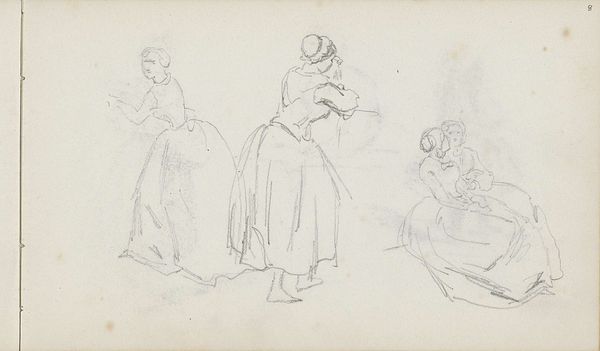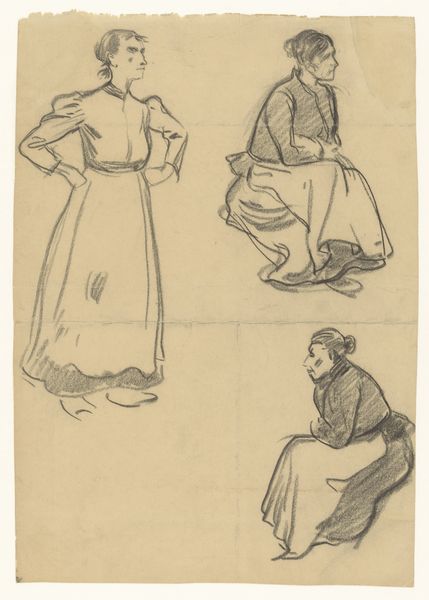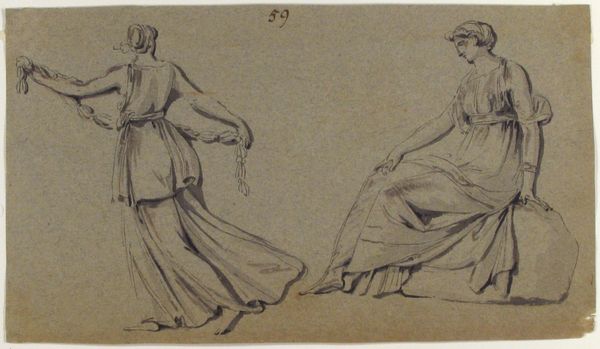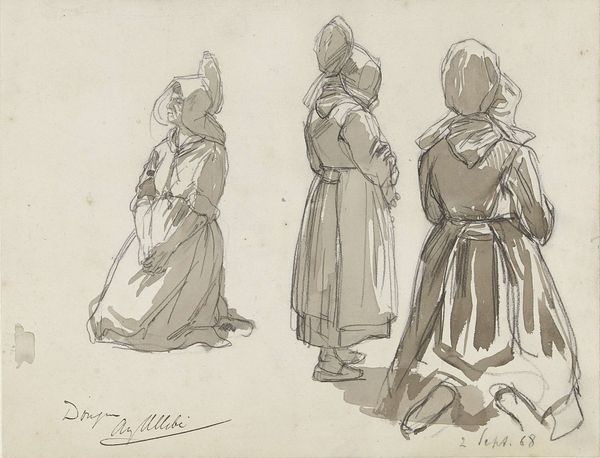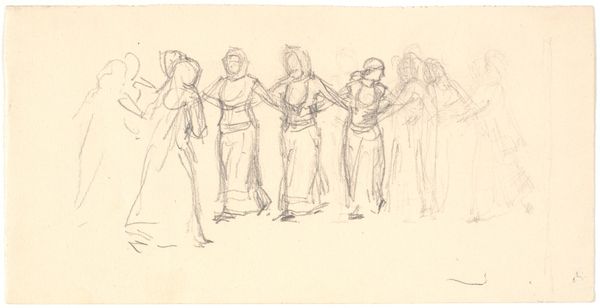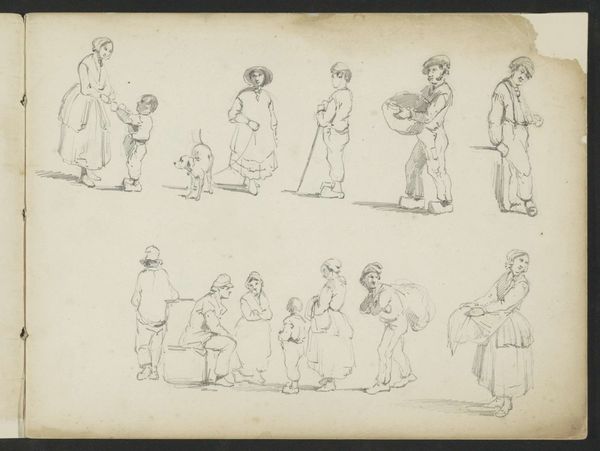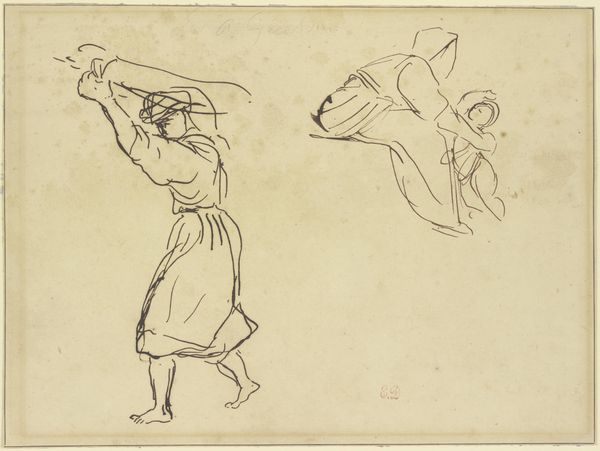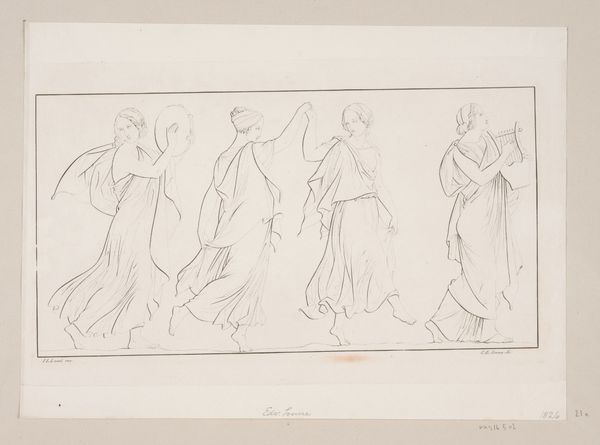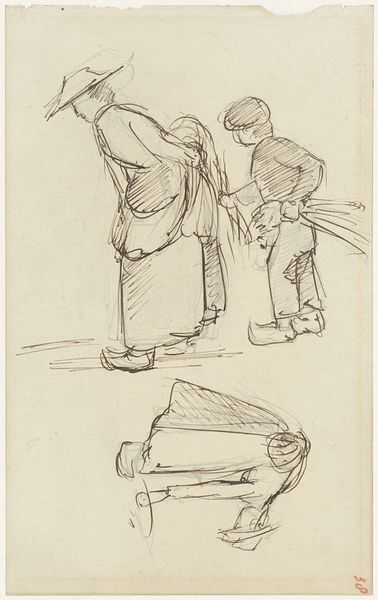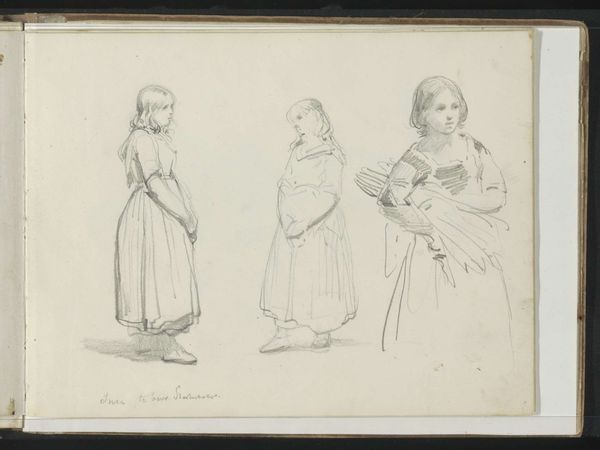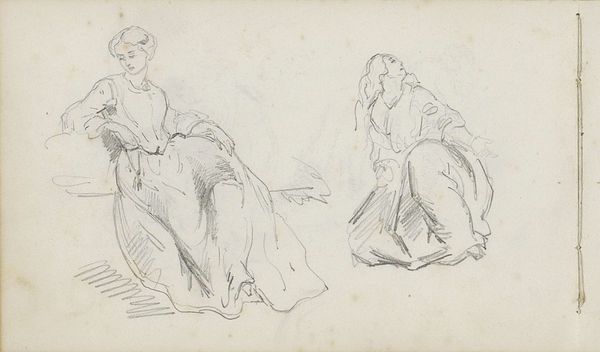
drawing, paper, dry-media, pencil
#
drawing
#
figuration
#
paper
#
dry-media
#
pencil
Dimensions: sheet: 25.4 × 35.72 cm (10 × 14 1/16 in.) board: 30.8 × 41.28 cm (12 1/8 × 16 1/4 in.)
Copyright: National Gallery of Art: CC0 1.0
Curator: This is "Navajo Women, Ganado, Arizona," a 1917 pencil drawing by Mahonri Mackintosh Young. Editor: It strikes me as something fleeting—an attempt to capture a sense of constant motion with spare strokes. The postures convey hard labor, resilience… there’s something ancient about it, wouldn't you say? Curator: Precisely! It's all about line and form; notice how the figures' contours are not rigidly defined, fostering dynamism. The artist renders form through the varying weights of lines to define their garments, posture, and spatial relationship with one another. Editor: And those postures resonate. To me, this isn't simply a portrait, but an archetypal representation of the Navajo women. It makes me consider their roles, their burdens… How do their traditional garments shape the narrative? The skirt lengths speak to modesty but also functionality, the woven patterns a visual echo of the landscape and spiritual beliefs... Curator: Garments undeniably contribute to spatial composition—they affect how one views form—though these aspects of semiotics and emotional association aren't my primary concern. Note that their gestures and spatial relationships evoke balance, despite the implied movement. It isn't static; it's arrested movement. See how the diagonal orientation helps the composition. Editor: Certainly. It leads your eye from one figure to the next. The women’s bent postures suggest deep connection to the land, reinforcing this feeling of perseverance, survival in what could often be harsh conditions. Curator: That interplay with space creates rhythm and depth. This visual rhythm, though, is offset by a more solid use of line in some areas which, structurally, is significant, and prevents complete dissolution into ethereality. This makes a stronger focal point to ground and offset movement. Editor: We read cultural resilience in visual form—quite powerful through simple lines on aged paper. Young captures that resilience without romanticism or exploitation, a difficult line to walk as a non-native artist. Curator: Yes, but beyond what can be deciphered regarding Young’s intent and their depiction within a colonial structure, the effectiveness here derives from formal elements—economy of means in rendering bodies, the way light and shade create spatial relations on paper, it is very cleverly designed to convey an underlying reality. Editor: In viewing the symbolism of hardship here alongside form and shape, my appreciation only deepens. I see the drawing as both artistic study and cultural touchstone. Curator: Indeed. Focusing our conversation on form enables new understandings and points of analysis beyond our preconceived ideas and associations.
Comments
No comments
Be the first to comment and join the conversation on the ultimate creative platform.
